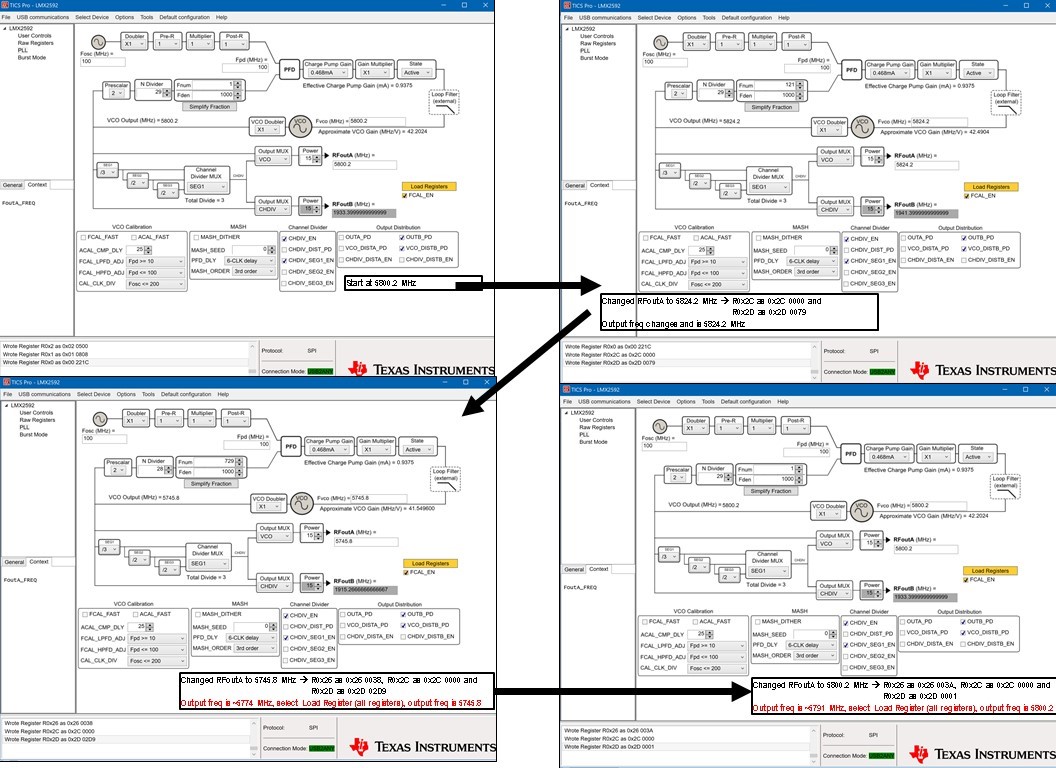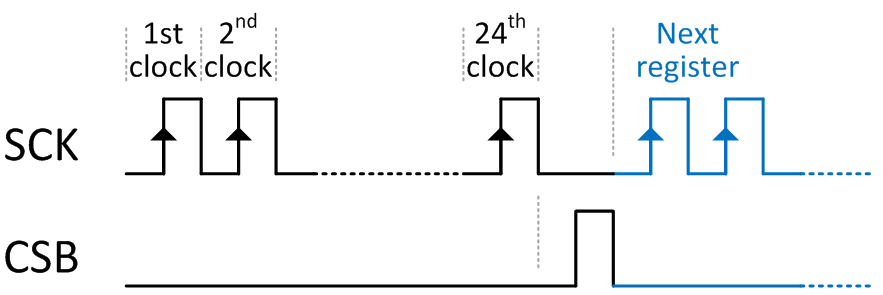Other Parts Discussed in Thread: TMS320F28027, , LMX2592, USB2ANY
Hi,
I am trying to change frequencies on the LMX2592EVM using the TI TMS320F28027 LaunchPad via SPI. The LMX2592 is using the 100 MHz internal oscillator. I can get the MCU to send all of the register values to the LMX2592 and start transmitting at 5800 MHz. When I try to change frequencies using the procedure shown in the User's Guide section 7.5.2 (SNAS646E, Jul2017 version), the PLL doesn't change to the target frequency. Instead it changes to +48 MHz from the original frequency. If I change the starting frequency, it continues to change to approximately +48 MHz instead of the 2nd target frequency. Is there a bit field that needs to be enabled/disabled to cause the PLL to accept the new frequency? I am following the register value changes that TICS Pro performs when changing frequencies using the USB2ANY directly connected to the LMX2592EVM.
Rob



